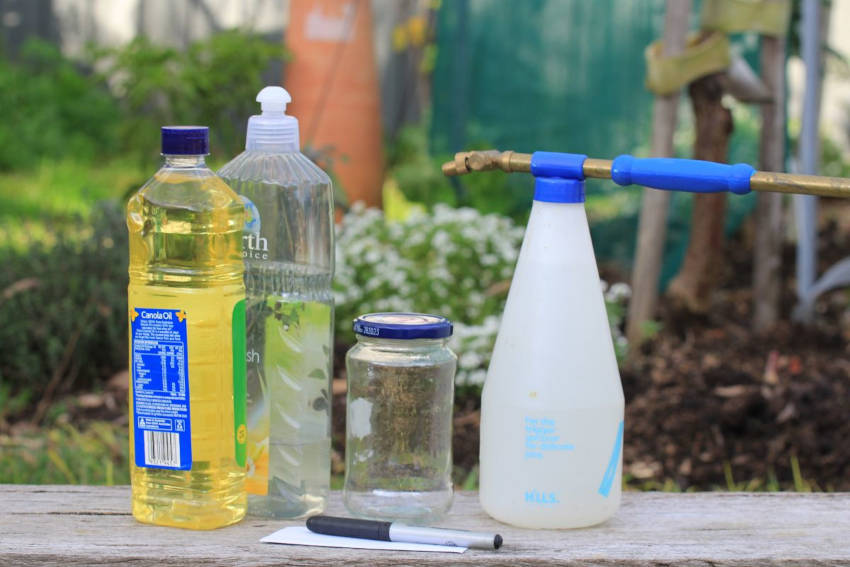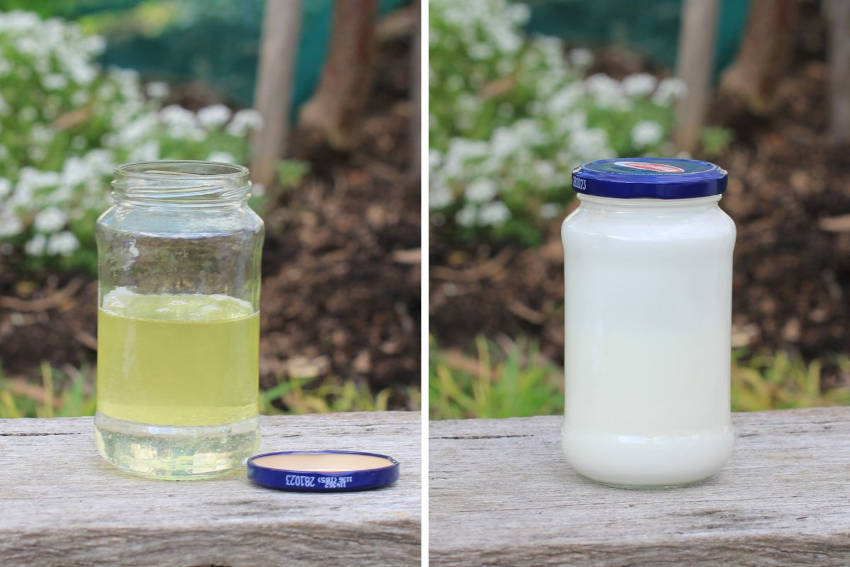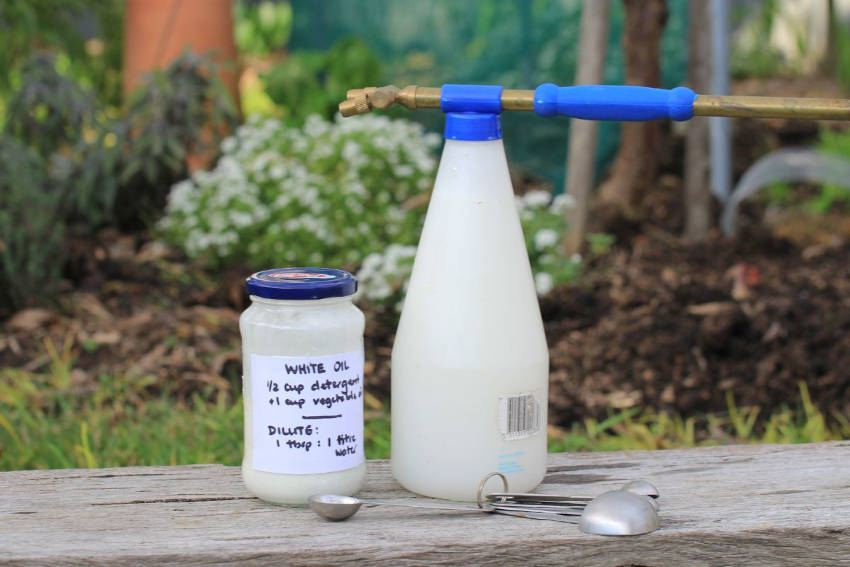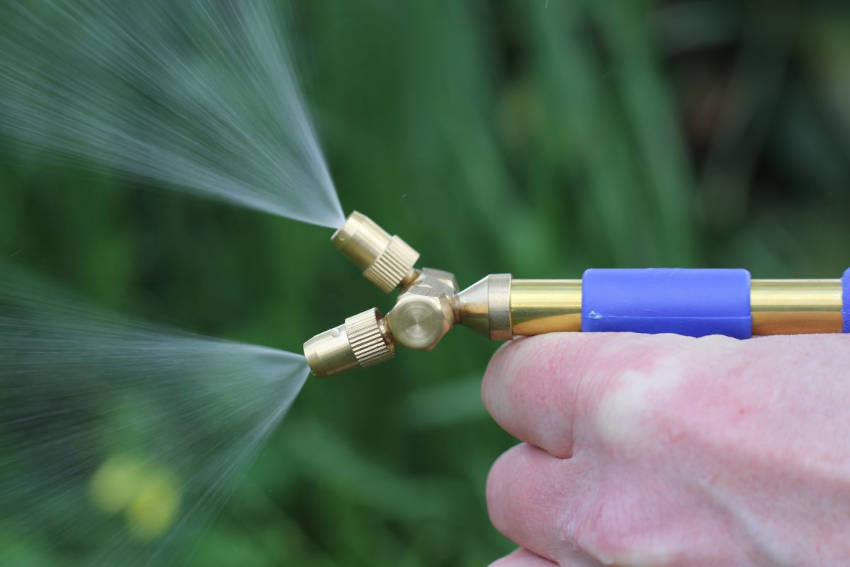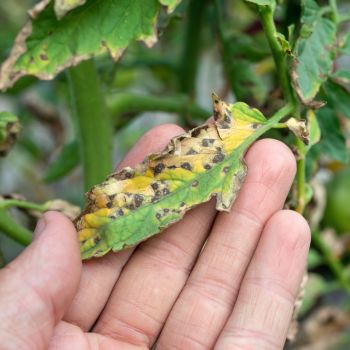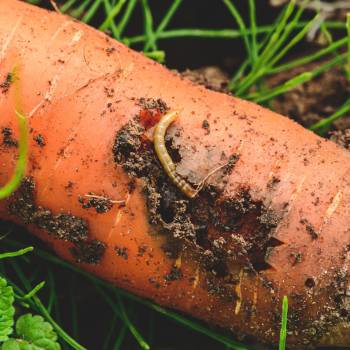White oil is a tried and tested pest control spray that was used long before chemical-based and synthetic pesticides were even thought of. Like other homemade pest and disease remedies, white oil offers a more sustainable alternative to commercial horticultural oils. What’s more it can be made easily using simple ingredients you’ll likely already have. Here’s what you need to know to make your own white oil.
What is White Oil?
White oil is a pest spray used to control sucking and chewing insects. It works as a ‘suffocant’, smothering insect pests rather than poisoning them. While similar to shop-bought horticultural oil or pest oil, white oil’s main ingredient is vegetable-based (rather than petroleum-based) so it’s generally less expensive to make and more eco-friendly than commercial sprays.
What Can It be Used For?
White oil is effective against sucking and chewing pests including aphids, mealybugs, scale, spider mites, whiteflies and fruit moths. It is most effective on soft-bodied pests and is best applied when the pests are at an early stage in their development and populations are small.
White oil is a contact pesticide that works by clogging the pores of pests or by disrupting the normal functions of their cells and effectively suffocating them. Therefore a thorough application is required for the spray to work. The advantage of a suffocant over a toxic pesticide is that pests can’t build resistance to the spray.
Used properly, white oil is effective for a very short time (less than a day, hence the need for repeat applications) and is relatively ineffective against larger, mobile, and hard-bodied insects like bees, ladybirds and beetles. This is good news for many mature beneficial insects, though there may still be some negative impacts on creatures like ladybird larvae. The short effective life of the spray means that it can be used in a targeted manner, but also that repeat sprays are often required.
Alternatives to white oil include leaving small populations of pests like aphids and whitefly, which may cause minimal damage to healthy plants. It is also possible to remove infestations by wiping them off carefully with a damp cloth, or you may be able to remove some of the soft growth from fruit trees or broad beans that blackflies and whiteflies are attracted to. Eco-oil, a commercially available vegetable oil-based spray, is a good alternative if you need to spray but don’t want to DIY.
How to Make White Oil
The basic recipe is in two stages: first mix up a concentrate, then dilute the concentrate to use it as a spray. Most recipes recommend making the concentrate from bleach-free, additive-free soap or detergent and vegetable oil in a ratio of one part soap to 2 to 4 parts oil. Using a ‘pure soap’ such as an organic castile soap is the gold standard, but other soap or dishwashing detergents are fine to use too.
1. Make the Concentrate
½ cup detergent
1 cup vegetable oil
Mix the ingredients together in a jar and give it a good shake. The mixture will turn a sudsy white. Label the jar (tip: write the recipe and how to dilute the spray on the label so you have all the information you need to use the spray or make the next batch of concentrate).
The white oil concentrate should keep for around 3 months if it is stored in a cool and dry place. Just be sure to give it a good shake before diluting.
2. Make the Spray
To dilute the concentrate, give the jar a shake and add 10-20ml of concentrate to a litre of water. It’s important to dilute the oil to this degree to avoid spraying too much oil onto your plants, which could clog up the pores on their leaves. Pour the solution into a spray bottle and it is ready to spray onto your plants.
Only mix up what you’re likely to use in a single spraying session, as the diluted spray doesn’t store well and the oil in it may clog up spray nozzles. When you’ve finished spraying, clean equipment with warm water with a drop of detergent added.
How to Apply White Oil
Always use your newly-made spray on a small test area of the plant you wish to spray first in order to check that it is safe for use on that plant. It is said that hairy or especially soft leaves are less suitable for this spray as they are more likely to burn. The spray is safe to use on leafy vegetables with no withholding period, though it’s a good idea to wash them thoroughly to remove the oil (and any dead insects). It is also best to avoid spraying onto fruit and fruit blossom as the spray may damage the delicate blossom.
The best conditions for applying white oil are when it is dry, cool, and not windy. Rain will wash your white oil away so pick a day when rain is not forecast. Temperatures above 30°C increase the likelihood of burning of your plant’s leaves; do not spray on hot days. Wind will mean the spray is blown off as it is being applied. It is also recommended that the spray be applied early in the morning to minimise the damage to beneficial insects.
You will need to apply your spray liberally and ensure that both the topside and underside of leaves have a good covering as well as the stems or branches. You may wish to apply a preventative spray on fruit trees, particularly in spring prior to blooming, but otherwise wait until an infestation is apparent before spraying. Repeat applications every two to three weeks are likely to be necessary if you want to consistently reduce your pest population, and are best applied as soon as you see signs of an infestation.
White oil is one of the most effective organic pesticides, and it’s easy and inexpensive to make yourself. Mix up a jar and add it to your pest control arsenal today.
